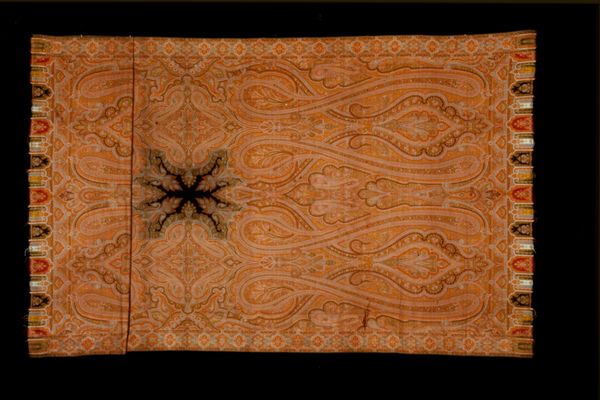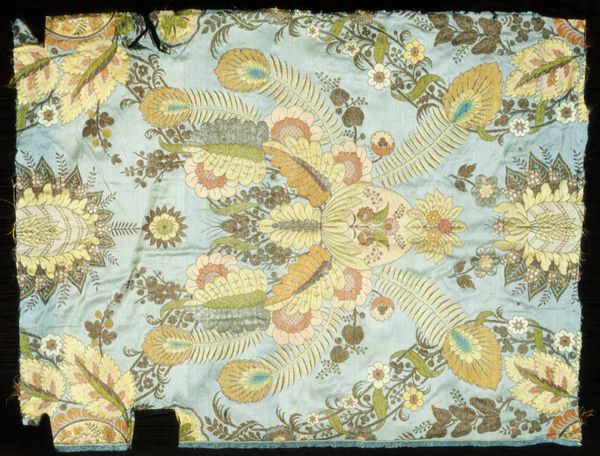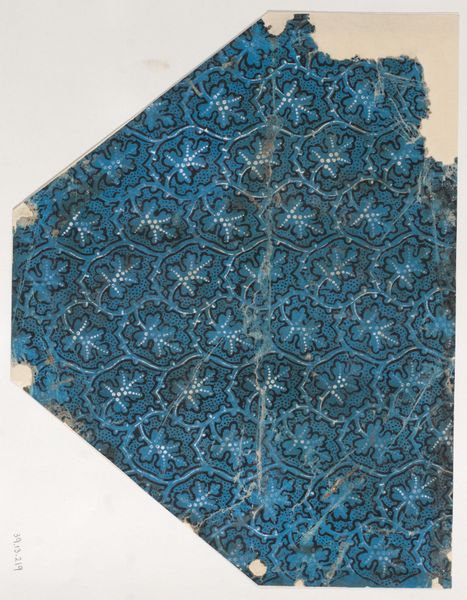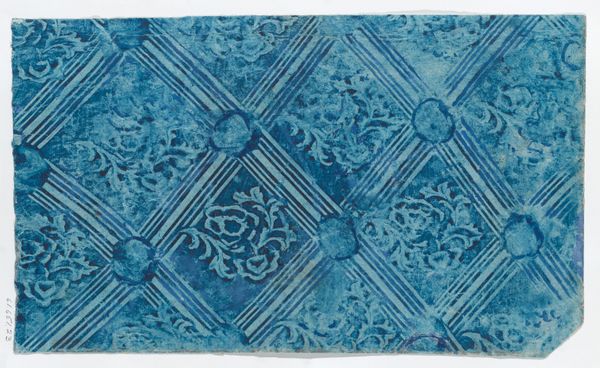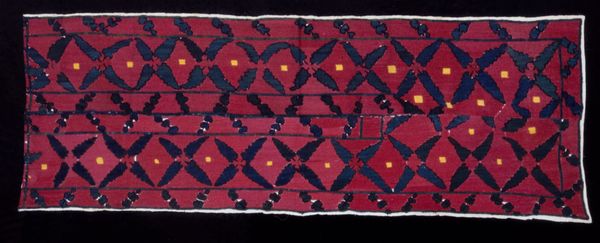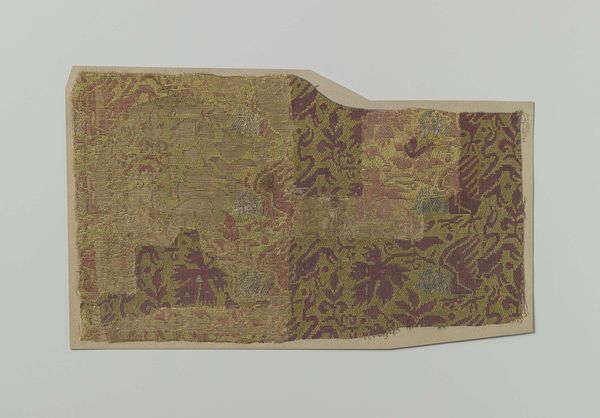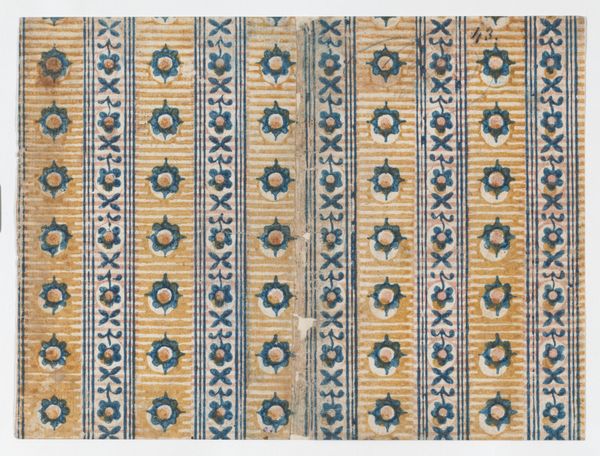
fibre-art, tempera, silk, weaving, textile
#
fibre-art
#
tempera
#
silk
#
asian-art
#
weaving
#
textile
#
orientalism
#
decorative-art
Copyright: Public Domain
Editor: Here we have a child’s shirt, a Parsi gara textile dating back to the 19th century. It's currently housed at the Minneapolis Institute of Art. I'm immediately struck by how ornate and densely patterned the embroidery is against that dark ground. What elements do you notice within its construction? Curator: Formally, it's a fascinating example of textile design. Observe how the embroidered motifs function not merely as decoration, but as structural elements. The dense, repetitive patterns create a visual rhythm, almost like a complex musical composition. The way the colors are deployed—the interplay of the pastel embroidery against the dark ground—defines the whole work. Consider the relationship between the silk and tempera used; how do these material components dialogue within the piece's totality? Editor: It’s interesting you point out the rhythm of the patterns. Now I’m thinking about how those repeated floral and animal designs contribute to a sense of visual harmony, but does that limit how the motifs are interpreted? Curator: Indeed. However, the motifs become interesting structural forms for analyzing a sense of unity through repetition. Can the weaving patterns themselves be understood as signifiers or indexes? What visual strategies does it use to create this unified, all-over effect? How does the artist achieve balance without symmetry? Editor: So, it is the compositional arrangement, more than the imagery itself, that really drives meaning in the work. Curator: Precisely. Notice how the boundaries of the garment are delineated, creating a self-contained visual field. Each component, from thread to textile, is instrumental to the totality. This work foregrounds the visual elements—line, color, texture—demanding to be analyzed as intrinsic to the garment. Editor: I hadn’t thought about it that way before; focusing on those underlying elements really highlights the sophisticated techniques and craftsmanship at play. I guess I tend to think about textiles more for their cultural stories than for what the artist does visually and materially. Thanks. Curator: Analyzing in this manner helps us see beyond simple representation and reveals the underlying formal structure. Hopefully you'll incorporate visual and theoretical analysis in your repertoire now!
Comments
No comments
Be the first to comment and join the conversation on the ultimate creative platform.
